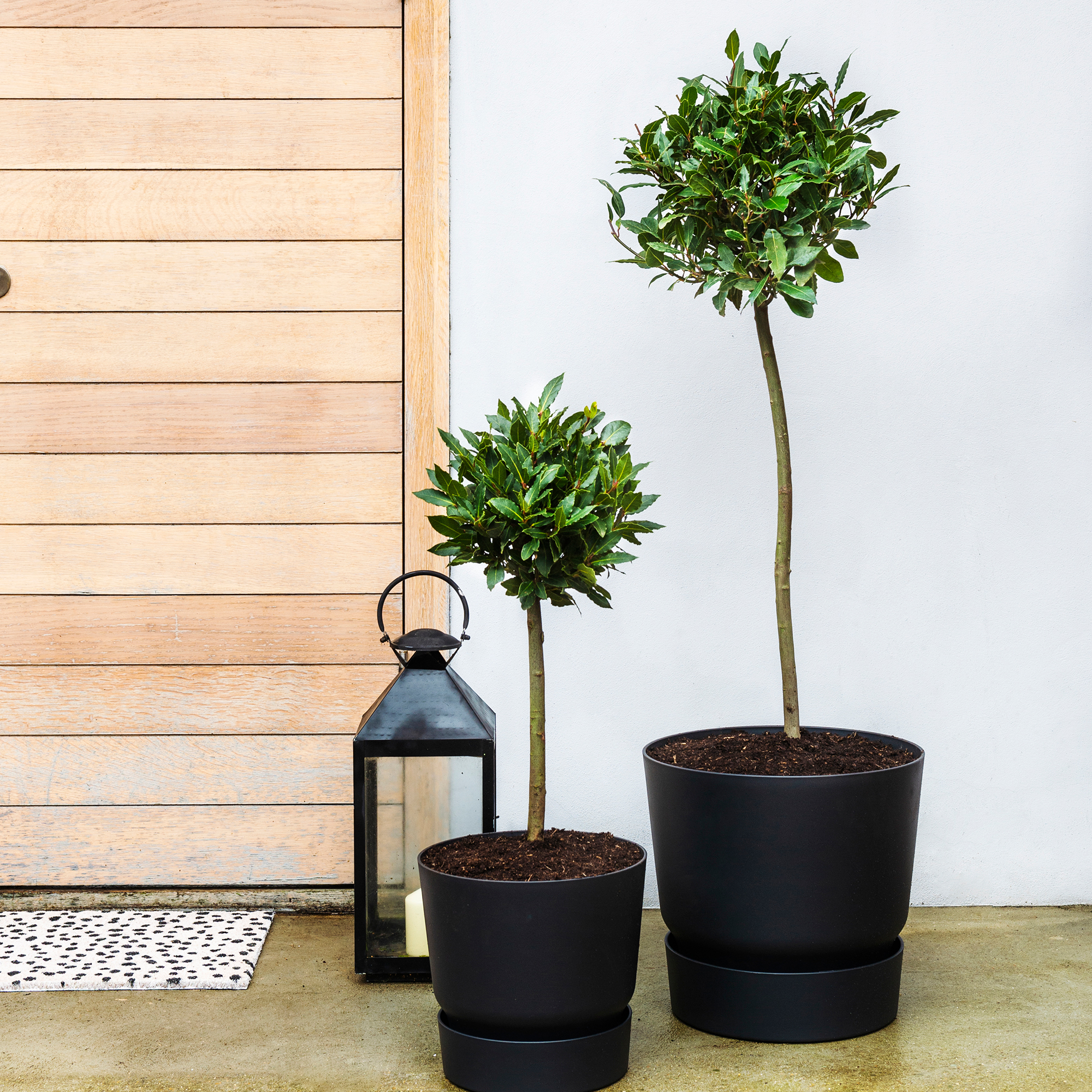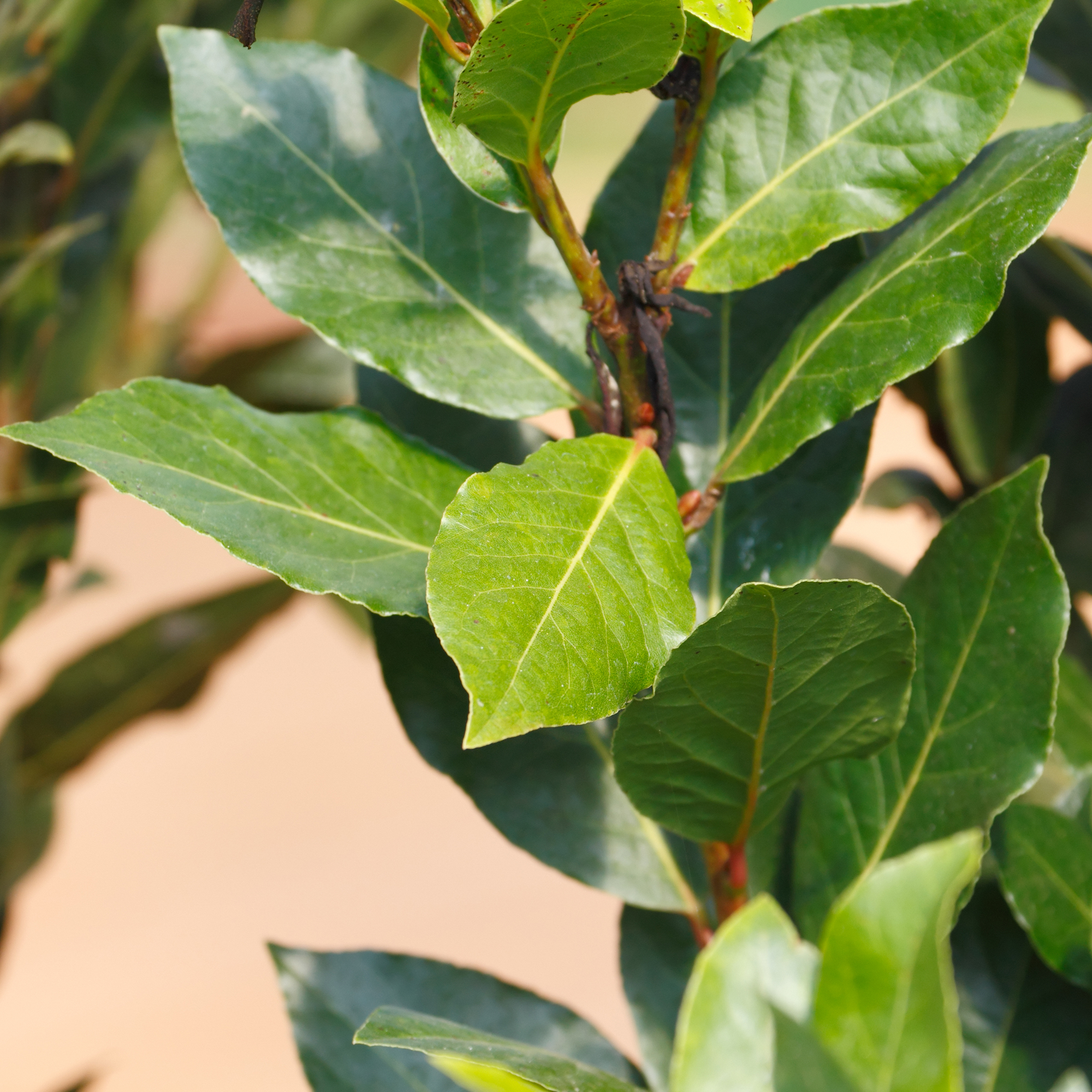
Discovering when - and how - to prune bay trees is key to ensuring the health and longevity of your plant. To answer all our pruning questions, we've gone straight to the experts to find out everything we need to know about caring for these garden classics.
When it comes to versatile garden ideas, bay has to be one of the best. That's in terms of how you can style and shape it and, of course, use the leaves. 'Bay trees (Laurus nobilis) make wonderful shrubs in the garden,' agrees garden designer Camellia Taylor. 'They provide evergreen structure, can easily be shaped into topiary, and have beautiful aromatic leaves that can be used in cooking.'
But to make the most out of your bays, you need to know exactly how and when to get cutting them back...
When to prune bay trees

Unlike with cutting back lavender, a bay tree likes an early prune. 'The best time to treat your bay tree to a trim is during the late spring months as it enters its peak growing season,' explains Jo Lambell, founder of houseplant company Beards & Daisies.
'You’ll notice your bay tree will enter a growth spurt during the warm summer months, so you can continue to trim as and when needed throughout the season,' continues Jo. 'But aim to finish pruning into your desired shape by the end of summer. Pruning during your tree’s growing season can help encourage a fuller, more dense foliage.'
If a topiary is your aim for the bay tree, timing is also key. 'If you are growing a bay tree as topiary this should be pruned to shape in the summer and will encourage a dense habit,' explains garden designer Camellia.
When not to prune bay trees

Just as important as knowing when to prune bay trees is knowing when not to. 'Avoid pruning in the winter, as this can make the tree susceptible to frost damage,' warns Sean Lade, director of Easy Garden Irrigation.
'You also want to avoid pruning during a heat wave. Don't try this type of gardening in hot weather, instead wait for cooler temperatures to be forecasted before pruning to ensure you don’t stress the plant.'
How do you prune bay trees?

'Use a pair of sharp secateurs for pruning,' instructs Sean. 'They provide a clean cut and cause the least damage to the plant. Ensure your tools are clean and sharp to prevent spreading disease.'
'If you are growing a bay tree for its leaves to accompany your herb garden, you can let it grow a bit freely, but you’ll still want to prune it to keep it healthy. Look for any dead, diseased or damaged branches. These should be pruned back to the base or the nearest healthy offshoot. This helps keep the tree healthy and prevents the spread of disease.'
'Like other plants, we also want to prune bay trees to promote good air circulation,' continues Sean. 'Prune to thin out dense areas of the tree, which can help prevent the onset of fungal diseases. However, be careful not to leave the tree too bare, as it can become sunburned.'
'When a bay tree is young, you may want to encourage branching by pruning the central stem,' Sean adds. 'Do this by snipping the very top of the tree when it's reached your desired height. This will encourage it to sprout branches from the sides, creating a fuller, bushier appearance.'
How do you prune topiary bay trees?

'Bay trees are often grown as topiary, which means they’re shaped into specific forms,' notes Sean from Easy Garden Irrigation. 'Regular pruning helps maintain their desired shape. When cutting for shape, make your cuts just above a leaf node or bud that’s facing the direction you want the growth to go.'
'The most popular and instantly recognisable is the rounded lollipop shape, with a single trunk with a ball of leafy green foliage on top that you'll often see in front gardens,' says Jo from Beards and Daisies. 'To achieve this iconic shape, it’s important to trim away any lower branches, and clip any top branches which are growing out of your desired, rounded shape.'
'Keep standing back to make sure you are happy with the shape that you are creating,' adds garden designer Camellia.
How hard can you cut back a bay tree?

Hard pruning is pretty much what it sounds like - giving it a good, deep prune. Some plants love, or even need, this attention, but it can have adverse effects on others.
'A bay tree is quite resilient and can generally handle a heavy pruning if needed,' says Sean from Easy Garden Irrigation. 'However, it's important to remember that more severe pruning will slow down the growth of the tree as it recovers.'
'If the bay tree has grown too large or out of control, it can be cut back quite hard - sometimes to within 60cm (2ft) from the ground. But remember, it's crucial not to remove more than a third of the total foliage at once as this could potentially stress the tree and inhibit its recovery.'
'If a severe pruning is necessary, it's best to carry it out in stages over a few years, rather than all at once,' suggests Sean. 'This gives the tree a chance to recover and produce new growth between pruning. After a hard prune, feed the tree with a general-purpose fertiliser and make sure it's well-watered.'
'We’d encourage you to go slowly and gently when it comes to pruning your bay tree, especially if this is the first time you’ve ever pruned it,' agrees Jo from Beards & Daisies. 'Start by cutting away any dead or damaged leaves to help redirect your plants energy.'
'Pruning too harshly can result in shocking your plant into a more dormant phase, and it could take a few years for leaves to grow back properly.'
How do care for bay trees after pruning?

Aftercare is an important step of pruning which you may not have considered, but this gardening tip is key to a healthy plant.
'After pruning, give your tree some extra care,' advises Sean Lade. 'Water it well and consider applying a balanced, general-purpose fertiliser. Monitor the tree for any signs of stress or disease in the weeks following pruning.'
How do you look after bay trees?
'Throughout the year, keep an eye on your bay tree for any dead or yellow leaves,' says Sean from Easy Garden Irrigation. 'Regularly removing these will help keep the tree healthy and looking its best.'
'If your bay tree is potted and you want to maintain its current size, trim the roots every few years,' Sean continues. 'This is best done in early spring at the same time you're doing your regular pruning. Simply remove the tree from its pot, trim back the outer layer of roots, and repot it with fresh compost.'
'Regularly check your bay tree for signs of pests or disease. Common issues include bay sucker pests and leaf spot. Pruning can often help control these problems, but if you see extensive damage or something you can't identify, it may be best to consult a pro.'
Are bay trees cold hardy?
'I have seen how the last few winters have taken their toll on bay trees,' says garden designer Camellia. 'They can withstand temperatures down to -5c but cold winds and frost will damage the foliage.'
'My tip is to keep an eye on the winter weather and be prepared to cover bay trees in fleece (if possible) to prevent damage to their foliage.'







